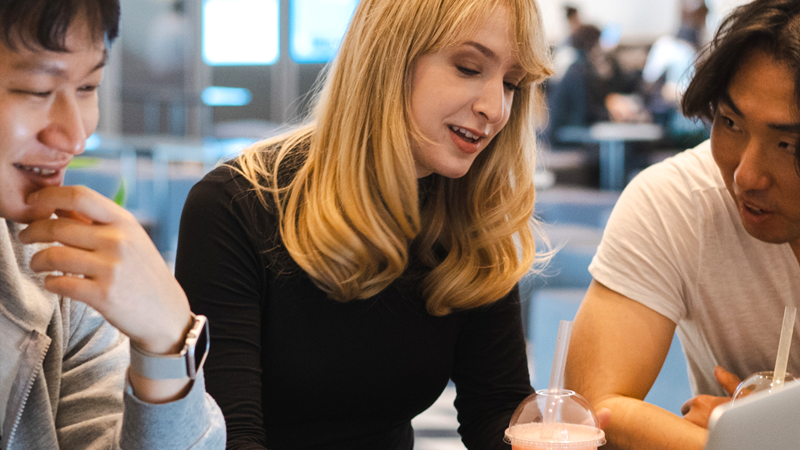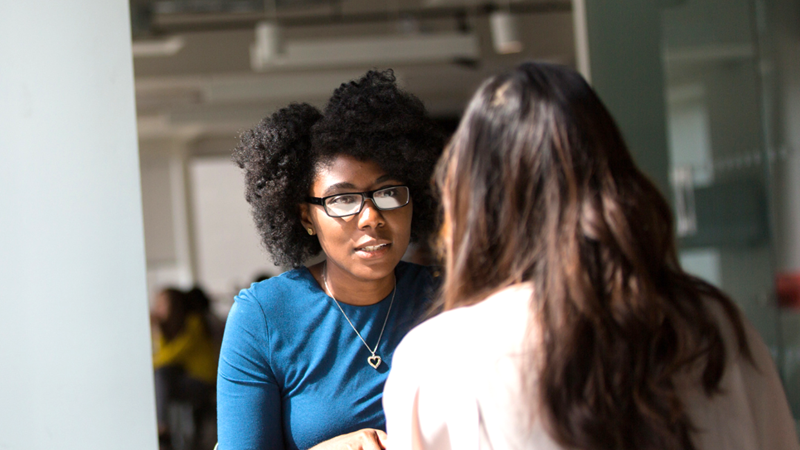Learning snapshot
Interviewing for data collection
When collecting data through interviews, it’s important to consider several key factors to ensure the process is effective and aligned with your objectives. This includes determining when interviews are the most appropriate method, selecting the right type of interview format, and identifying the specific data you need to collect. Careful planning and consideration of these elements will help you design interviews that yield meaningful insights and meet the goals of your project.
31 January 2025
Interviewing is a qualitative data collection method. Qualitative data is evidence based on written, spoken, or observed information. There are several ways to collect qualitative data. It is important that you think about what the best method for you and your organisation is, and what is manageable.
- Interviews and focus groups are two of the most common methods of qualitative data collection. Generally, interviews gather data from individuals, while focus groups involve group discussions guided by a researcher. Both typically use a set of questions to steer the conversation.
- Case studies are often used to illustrate good practice or to offer rich insights into specific experiences. Case studies provide in-depth investigations of one or a few individuals or organisations (cases), often using multiple data collection methods. Ideally, individuals are chosen because they represent a typical experience or, alternatively, an unusual case that provides valuable insights.
- Observation, photos, and note taking are methods that help you understand what is happening in the immediate spatial or social context. These forms of evidence are often missed when reporting on outcomes but can add some valuable evidence to show how you achieved or are achieving your outcomes.
- Photovoice is a creative and participatory way to collect evidence. Participants take photos and provide narratives, offering deep insights into their lived experiences. Photovoice can be particularly useful when collecting stories from people with low literacy, when there are language or cultural barriers, or other circumstances when traditional data collection is not appropriate. For more on this, visit the Photovoice website.
- Mixed methods data collection combines both qualitative and quantitative approaches, enhancing the validity and depth of the information gathered. This method is particularly effective because it allows for a comprehensive understanding of the subject matter. For example, qualitative techniques, such as interviews or focus groups, can be used first to explore themes and uncover the nature of the issue. This is then followed by quantitative methods, like surveys, to assess the prevalence and nuances of those themes, providing a well-rounded perspective on the data.
When are interviews appropriate?
Interviews work best when you need detailed, in-depth information, want to understand why things happen, identify knowledge gaps, or hear from experts. They are great for exploring what matters to people. However, they may not be suitable if you need to reach a significant number of people, gather quantitative data, have limited time, face communication barriers, or if the topic is sensitive and might distress interviewees.
What type of interview should I conduct?
It might be helpful to think of interview types on a spectrum as there can be some blur between them. Even though three types of interviews are described here, you can mix two or more interview types.
Used in quantitative research, these follow a standardized set of questions with pre-set answers that interviewees are asked to select from (e.g., door-to-door surveys, phone polls).
These have pre-planned questions but allow flexibility. The interviewer can prompt the interviewee for more detailed responses. They combine open and closed questions.
These are more like natural conversations with topic areas and themes rather than standard questions. They can evolve based on the interviewee's responses.

Deciding what data to collect
When planning your interviews, consider who you will collect data from and what you want to know. Refer to your outcomes and evaluation questions. Decide on the best interview type (structured, semi-structured, or unstructured) and consider whether there is a validated tool available that you can use. Always consider culturally appropriate methods when interviewing diverse communities and think about the sample size, available skills in your team, and the timing of your interviews.
________________________________________________________________________________
10 Tips for designing interview questions
Once you are clear about the type of interview you are going to conduct, it is time to design your interview questions. To make sure your interviews are the most effective they can be, align them to your evaluation questions and outcomes. Remember to stay focused and ask only what you need to know, and think about the following:
- Use clear language, avoiding jargon or acronyms.
- Avoid 'double-barrelled' questions - ask about one issue at a time.
- Don't assume anything. For example, "What year did you finish high school?" might not be appropriate for everyone as it assumes a level of education.
- Make sure questions are logical and in a sensible order.
- Pilot your questions or get feedback from colleagues before starting.
- Start with an easy question to help your interviewee relax.
- Use open-ended questions to prompt detailed responses.
- Avoid leading questions that might bias the responses.
- Prepare and practice your questions in advance.
- Know what type of interview you're conducting and be flexible.
_________________________________________________________________________________
Conducting your interview.
Now you are ready to go, and you have invited participants to meet for an interview. Make sure your interviewee has all the information they need about what the data will be used for, who will have access to the data, how long the interview will last for, and consent to the interview being recorded. Recording the interview will enable you to focus on the interviewee, provide a record of what was said, and improve the validity of the data collection (the accuracy and reliability of the information).
Firstly, think about whether you will be conducting the interviews face-to-face or online. There are many factors that may influence this decision, such as location and proximity to your interviewees, the time you and your interviewees have available, and interviewee preference.
Before you conduct your interviews, use the following checklist to make sure you are well prepared:
- If you are conducting the interview online, check your microphone, speakers, headphones, and camera.
- If you are recording the interview, check your recording device. (If you are using Teams to interview online, you can select ‘recording and transcribing’ within the app).
- Ensure appropriate lighting and a distraction-free environment.
- Choose a quiet spot for face-to-face interviews or a comfortable and private location.
- Dress to put the interviewee at ease.
- Confirm the interview details a day before, including time, location (or online link), and how to identify you if meeting face-to-face.

Some handy guidelines:
- Opening the Interview: Start with informal introductions to build rapport. Explain the purpose of the evaluation/study, data usage, data access, interview format, and record consent.
- Asking Questions: Actively listen, be attentive, take notes, think about themes, and clarify responses if needed. Remember, you’re there to listen and uncover information.
- Closing the Interview: Ask for the participant's feedback on the interview and if they have anything to add. Thank them for their time. Review your notes immediately after the interview while it's still fresh in your mind.
There are some other interview techniques that you will need to consider. Always be mindful of your body language and facial expressions and avoid showing surprise or disapproval. Try always to be clear and concise with your language. Give interviewees time to respond, be comfortable with pauses, and keep acknowledgments and exposition minimal to avoid distractions. Stick to the promised interview duration.
What comes next?
Conducting an interview is just the beginning of the data collection process. To ensure the information is useful and ethically managed, securely store your recordings, notes, and consent forms (refer to the Insight Article on Ethical Data Collection and Management).
Transcribe your interviews, taking care to proofread and clean up automated transcriptions if using tools like Microsoft Teams, and de-identify the data during this process. Keep in mind that each hour of interview time typically requires about three hours of additional work for transcription, cleaning, and analysis.
Finally, analyse the data to uncover meaningful insights—resources like the Centre for Social Impact’s Roadmap to Social Impact can provide valuable guidance. With thoughtful preparation and careful follow-through, interviews can become a powerful tool for gathering insights that strengthen your impact narrative and support your evidence of outcomes.
Learn about wellbeing
Understand how your community is going to help you to better target and plan your project.
Ready to plan your project?
Understand your vision, plan your impact and report on the outcomes of your project with three easy interactive tools in the Community Impact Planner.
Acknowledgement of Country
The Western Australian Community Impact Hub acknowledges and pays respect to the Traditional Owners of the land on which we are based, the Whadjuk people of the Noongar Nation and extends that respect to all the Traditional Owners and Elders of this country. We recognise the significant importance of their cultural heritage, values and beliefs and how these contribute to the positive health and wellbeing of the whole community.



